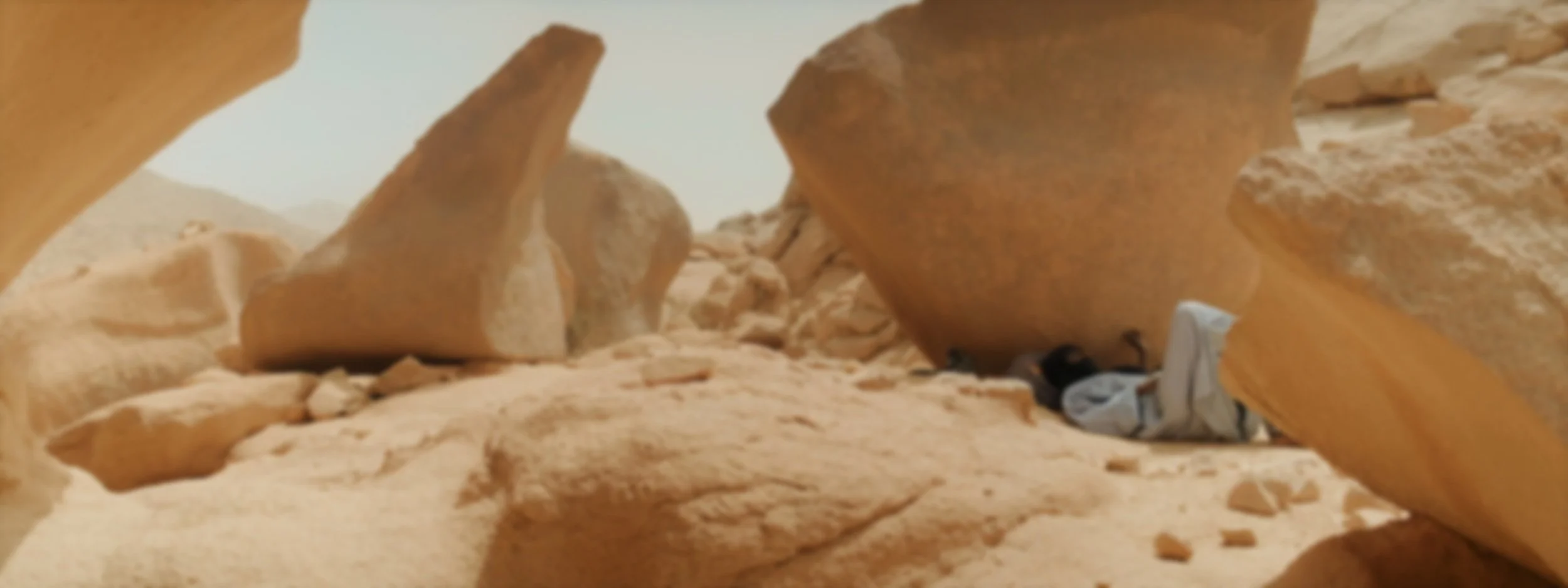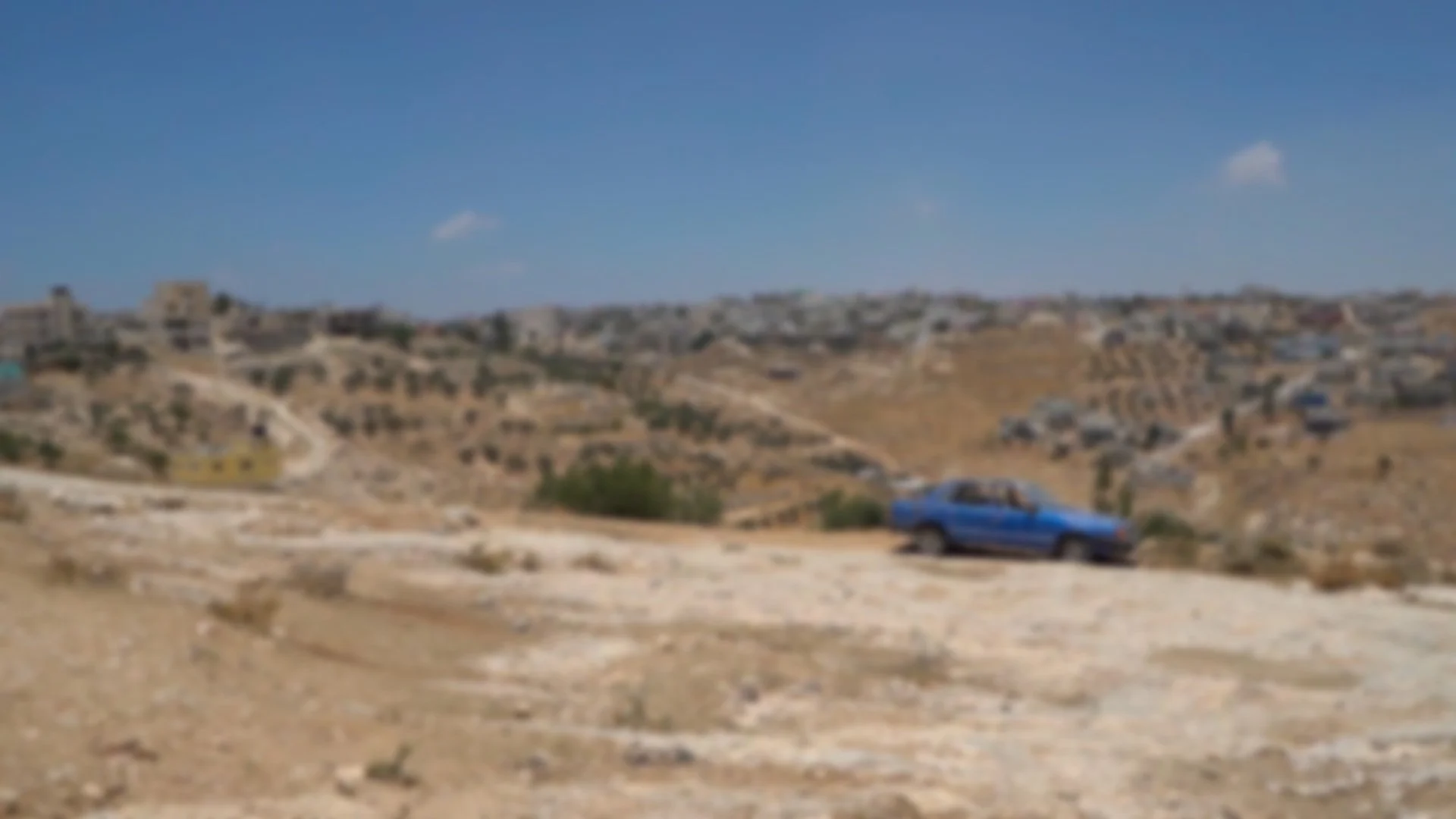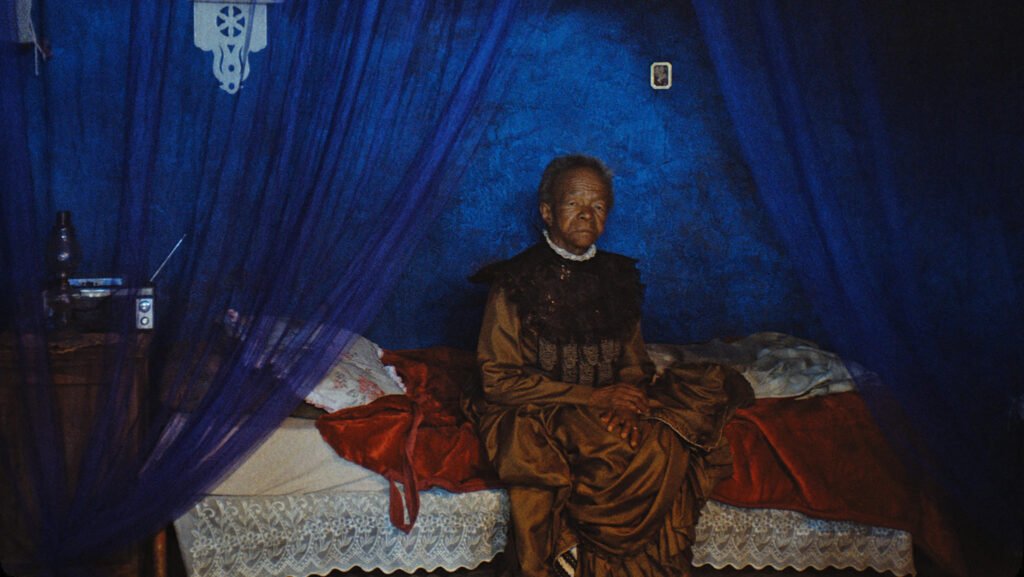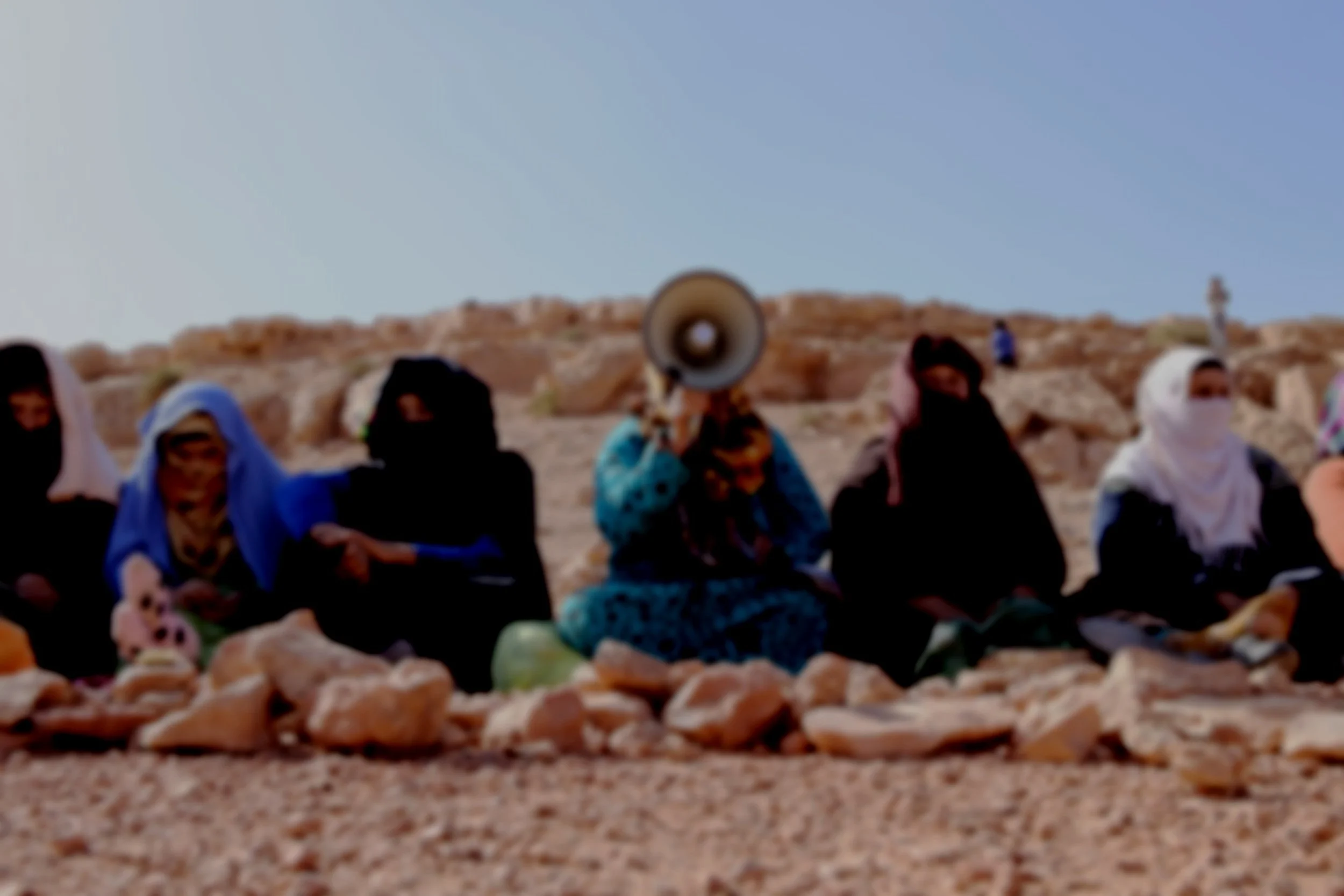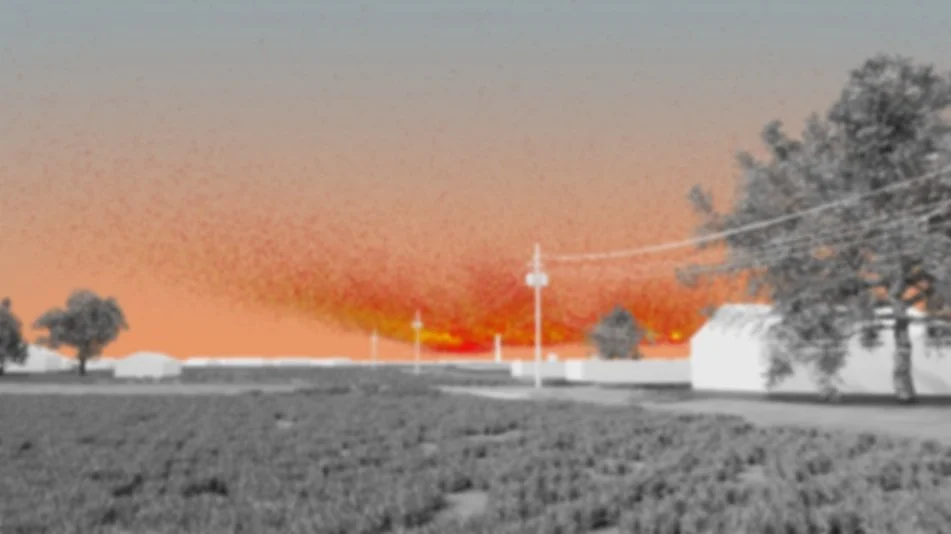COLONIALISM AND THE CLIMATE CRISIS - COMMISSIONED ESSAYS
COLONIALISM AND THE CLIMATE CRISIS - COMMISSIONED ESSAYS
‘The way the bomb exploded they thought that maybe it was the end of the world.’
The elderly man from the Escamaran tribe who is speaking might or might not be off-screen. An inhabitant of Mertoutek, an oasis in the Algerian Sahara, he recounts the aftermath of French nuclear tests carried between 1961 and 1966, a set of experiments which produced what we could call an ongoing apocalypse. His story joins those of other inhabitants, their narration describing a continued resistance against the end of their world. Arwa Aburawa and Turab Shah’s work is named as an affirmation of this resistance: And still, it remains.
Read more about And still, it remains in an essay written by Niki Kohandel: On listening beyond the endings in ‘And still, it remains’
There’s a Somali proverb “Libaaxa ka ciyo iyo kan aamusan, keebaa daran?”. This translates to “Which is worse, the lion that roars or the silent one?”. This proverb perfectly captures the insidious nature of slow, quiet violence. There may be no physical difference between the lions, but the important distinction is that you can hear when a roaring lion is coming, your fight or flight response is activated, and you seek a way to survive the danger. The question then, how do you fight against a silent lion? How do you protect yourself (and others) against slow, quiet violence? How do you know when it arrives… and what if it already has?
Read more about Life on the Horn in an essay written by Rahma Hassan: On Somali cinema and slow violence
Inas Halabi’s film We Have Always Known the Wind’s Direction (2019 and Dala Nasser’s film Red in Tooth (2021) are two films which explore erasure, (in)visibility and concealment by using techniques to register the less visible or invisible - from making nuclear radiation ‘visible’ through the use of coloured filters over the camera by Halabi to using a wildlife trap camera to capture nocturnal wildlife that inhabits the area by Nasser.
Read more about We Have Always Known The Wind’s Direction in an essay written by Sophie Hoyle: The Slow Violence of the Israeli Settler-Colony in Inas Halabi’s We Have Always Known the Wind’s Direction (2019) and Dala Nasser’s Red in Tooth (2021)
Climate collapse is not a future apocalypse. It is already here. And yet the West treats climate crises like a new armageddon, with ticking time bombs and catastrophe montages, as sudden events that need immediate answers. We are drowning in capitalism’s endless tide and have created a demand for quick solutions, overlooking the depth of root causes. Against this vicious tide rises slow cinema. In a world that prioritises speed, what if slowness could be a radical act?
Read more about The Flowers Stand Silently Witnessing in an essay written by Abeera Qureshi: The Land Remembers: Slow Cinema As Climate Testimony
In Davy Chou’s Diamond Island (2016) and Lemohang Jeremiah Mosese’s This Is Not a Burial, It’s a Resurrection (2019), sites of development are revealed as spaces of death and displacement, critiquing a colonial discourse of progress. These films resist the short term, spectacular harm common in narratives of climate crisis and instead represent the suppressed violences of land development through a visual language of loss. In their pairing of development with death, these films express an environmental necropolitics that centres the lives sacrificed to global capital. They intervene in the visual domination of neocolonial construction sites, their billboards and speculative renderings of wealth, to stay in the losses that global capital works to conceal.
Read more in this following essay: Development landscapes: cinema of environmental necropolitics By Megan Arranagu-Reddy
A girl, coming of age, takes to the stage in a Tunisian palace of men in bed with the French. In imagined court proceedings against the World Bank in Bamako, an old man, sitting in the audience after being denied the opportunity to testify on the stand, leaps to his feet. Clouds of sand roll across the landscape of a remote Moroccan village in the Sahara Desert to the thud of a drum.
And then, a voice pierces through the screen carrying a song.
Read more about Amussu in an essay written by Jessica E M: Songs of a Wretched Earth: The Voice as Testimony in Film
Based on rare archives, the exemplary adventure of Somankidi Coura – an agricultural cooperative founded in Mali in 1977 by West African immigrant workers living in workers’ accommodation in France – sheds light on the violence of colonial agriculture and the ecological challenges in Africa today. Read Abiba Coulibaly’s Intro to the film here.
Read more about Xaraasi Xanne in an essay by Abiba Coulibaly: The Ants Will Welcome You: Reading the Landscape in Xaraasi Xanne and Mooladé
1) London, March 2025
This text is structured as a series of footnotes that trail along a timeline that weaves in and out of the landscapes of Vietnam and Taiwan, as seen and unseen in Nguyễn Trinh Thi’s Letters from Panduranga (2015) and Tiffany Sia’s The Sojourn (2023). The former narrates fragments of Vietnam’s histories, from premodern to postcolonial, through a fictionalised exchange of letters between a woman based in Ninh Thuận (formerly called Panduranga, the spiritual heart of the matriarchal Hindu Cham indigenous people), and a man on a road trip through the ruins and rebuilding of postwar Vietnam.
“She Left Her Scythe for a Gun”: The Ecopoetics of Mortu Nega (Those Whom Death Refused)
By Matthew Maganga
Mortu Nega (Those Whom Death Refused) (1988) was Bissau-Guinean filmmaker Flora Gomes’ first feature film, set within Guinea-Bissau’s struggle against Portuguese rule. It is centred on a spirited protagonist, Diminga, and her journey to find her husband, Sako. It is a polyvocal story — on the complexities of a nation-state, the role of women in African liberation struggles, and the various notions of ‘struggle’. Within this thematic framework, the film also has a highly visible ‘ecopoetic’ strand — incorporating an ecological and environmental perspective that comments on colonial ecological violence, and how this violence compounds strife in times of natural weather patterns like droughts.
Read the full essay by Matthew Maganga here: https://www.othercinemas.co.uk/matthew-maganga
If toxic is a monument to slavery, how do we take it down?
If toxic air is a monument to slavery, how do we take it down?
by Forensic Architecture
A stretch of the Mississippi River once called 'Plantation Country' is now the 'Petrochemical Corridor', known to those who breathe its toxic air as 'Death Alley'. Using advanced techniques in cartography and fluid dynamics, Forensic Architecture worked to support local demands for accountability and reparations.


